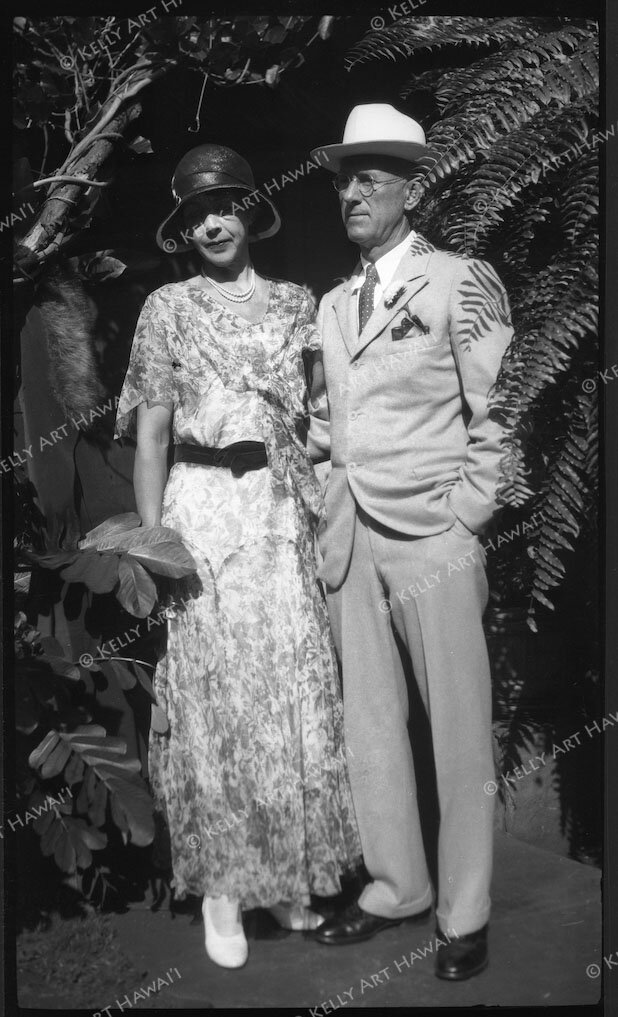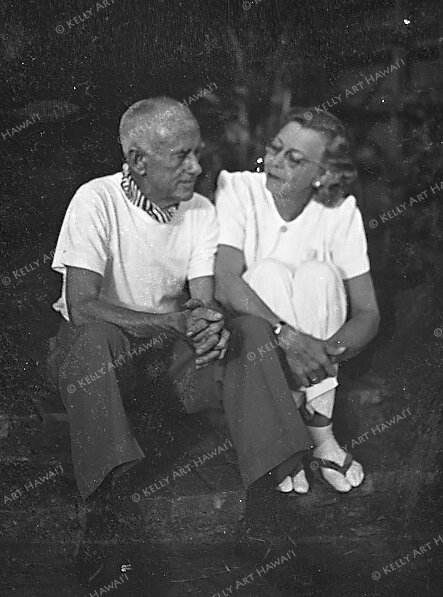KATE HARLAND KELLY, A BRIEF BIOGRAPHY
Kate Harland Kelly (1882-1964) grew up in the Bay Area California. She became an accomplished artist: an award-winning sculptor, printmaker and a brilliant photographer.
Born in a mining town in Northern California, Kate moved to Berkeley with her mother and two sisters after the death of her father in the late 1880’s. Kate was drawn to the arts at an early age. She was a talented pianist who sang and loved participating in local theater.
Kate was raised in an activist household. Her mother, Hester Harland was an educator and headed the Berkeley Chapter of Suffrage Rights. While in high school, Kate helped her mother campaign for suffrage. Advocating for justice remained with her throughout her life.
Kate met John Kelly through mutual friends in the Bay Area arts community. John was working in the San Francisco Examiner arts department at that time. They were married in 1908 and lived in San Francisco in the renown artist neighborhood of Russian Hill. Their apartment became a gathering place and spare studio for fellow art students.
Kate at work on sculpture at Mark Hopkins
In 1909, Kate began her studies at John’s alma mater, Partington Art School (San Francisco Art Institute) after it was rebuilt following the earthquake/fire. She excelled in sculpture and design and was nationally recognized for her work. She created scores of life-size figures of models. Some of her work as a student was cast in bronze. She also created a number of plaques by commission. (See Kate Sculpture).
In 1920, John had left the San Francisco Examiner and worked as a free lance advertising artist. In 1923, he accepted a job in Hawaiʻi to produce drawings for a new housing development. Kate and their young son accompanied him to Oʻahu where they expected to stay for one year. They fell in love with the Island culture and never left.
John soon secured a job with the Honolulu Star Bulletin and was experimenting with etching technique whenever he was not at work. After five years, he left his post at the newspaper to pursue his printmaking passion full time.
In order to support the family, Kate sold her popular miniature sculptures. She was the first to popularize replicas of hula dancers and lei makers. (Click to view Kate’s Sculpture Gallery.)
She also secured commissions to create commemorative plaques for historic sites throughout Honolulu and sold a sculpture to the Honolulu Academy of Art.
Commemorative plaques include a plaque for Queen Liliou’kalani, at the Queen’s residence (Washington Place), a plaque honoring Amelia Earhart at Diamond Head Lookout, King Kalakaua on Bethel Street) and the Banyan Tree at McCoy Pavilion.
Kate and John purchased a small lot on a wind-swept barren lava flow on the far side of Diamond Head, where they slowly built their home. They each had a studio and were able to concentrate on their art full time. She was an avid gardener and coaxed plants to flourish even in this dry and rocky terrain.
Throughout the 1930’s and 40’s, Kate generated an amazing body of photographs primarily of Native Hawaiian families living and fishing around the artists’ remote community. The Kelly’s became friends with many of their neighbors and spent time with them at the beach, harvesting and cooking food, and relaxing together at paina (parties) held at the Kelly home.
This amazing body of work serves as record of an era when Hawaiian people still enjoyed the sovereignty of survival, even as they were being displaced by aggressive “American progress.”
Kate appreciated the culture of the Hawaiian people and was one of the first haole (foreigner) to study hula with a halau (formal school of traditional hula.)
As John became more focused on etchings and experimenting with techniques, Kate realized that even as a former “advertising man,” John had no interest in promoting his art.
Consequently, Kate became instrumental in getting John’s work seen. She arranged gallery showings at their home and secured two exhibits in New York. The enthusiastic praise in the reviews of these exhibits was instrumental in establishing Kelly as a gifted master printmaker.
She entered John’s etchings in National Printmaking Association competitions in California and the Midwest. He won awards and received recognition with every entry.
Kate Kelly produced art throughout her life. She created a warm and welcoming home atmosphere enjoyed by many guests. Her representation of Hawaiian people and culture is her lasting legacy to Hawai’i.
Kate’s mother, Hester Harland In Yosemite with Susan B. Anthony and others, 1906. It is an interesting aside that Hester traveled on horseback throughout Northern California with Susan B. Anthony and others promoting Suffrage. (California won the vote for women 10 years before the 19th Amendment.) An educator, Hester was founder of what became the Parent Teacher Association (PTA).










